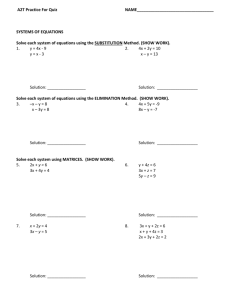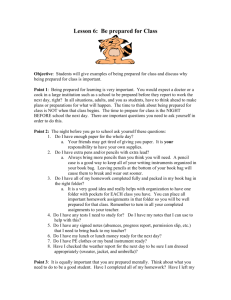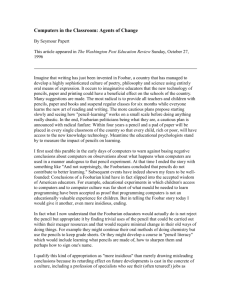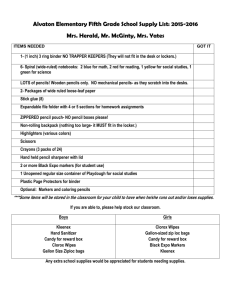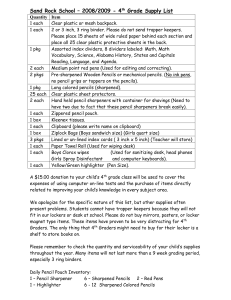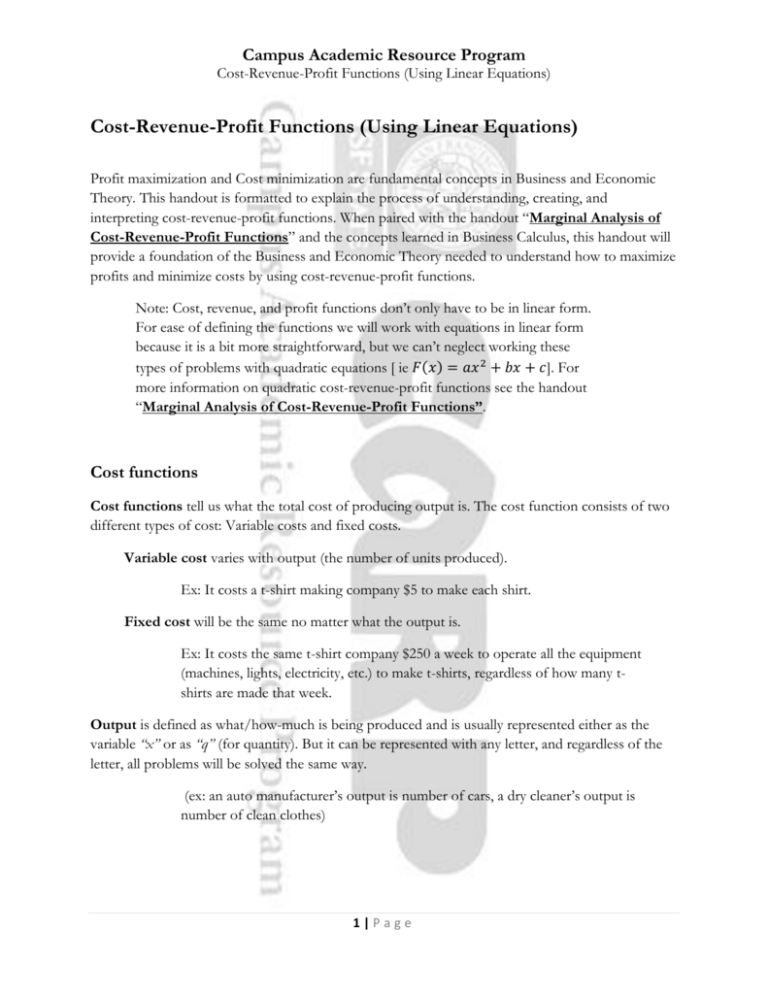
Campus Academic Resource Program
Cost-Revenue-Profit Functions (Using Linear Equations)
Cost-Revenue-Profit Functions (Using Linear Equations)
Profit maximization and Cost minimization are fundamental concepts in Business and Economic
Theory. This handout is formatted to explain the process of understanding, creating, and
interpreting cost-revenue-profit functions. When paired with the handout “Marginal Analysis of
Cost-Revenue-Profit Functions” and the concepts learned in Business Calculus, this handout will
provide a foundation of the Business and Economic Theory needed to understand how to maximize
profits and minimize costs by using cost-revenue-profit functions.
Note: Cost, revenue, and profit functions don’t only have to be in linear form.
For ease of defining the functions we will work with equations in linear form
because it is a bit more straightforward, but we can’t neglect working these
types of problems with quadratic equations [ ie 𝐹(𝑥) = 𝑎𝑥 2 + 𝑏𝑥 + 𝑐]. For
more information on quadratic cost-revenue-profit functions see the handout
“Marginal Analysis of Cost-Revenue-Profit Functions”.
Cost functions
Cost functions tell us what the total cost of producing output is. The cost function consists of two
different types of cost: Variable costs and fixed costs.
Variable cost varies with output (the number of units produced).
Ex: It costs a t-shirt making company $5 to make each shirt.
Fixed cost will be the same no matter what the output is.
Ex: It costs the same t-shirt company $250 a week to operate all the equipment
(machines, lights, electricity, etc.) to make t-shirts, regardless of how many tshirts are made that week.
Output is defined as what/how-much is being produced and is usually represented either as the
variable “x” or as “q” (for quantity). But it can be represented with any letter, and regardless of the
letter, all problems will be solved the same way.
(ex: an auto manufacturer’s output is number of cars, a dry cleaner’s output is
number of clean clothes)
1|Page
Campus Academic Resource Program
Cost-Revenue-Profit Functions (Using Linear Equations)
A cost function represents the total cost (𝒇𝒊𝒙𝒆𝒅 𝒄𝒐𝒔𝒕 + 𝒗𝒂𝒓𝒊𝒂𝒃𝒍𝒆 𝒄𝒐𝒔𝒕), and is often expressed
as a linear equation [i.e. = 𝑚𝑥 + 𝑏 ].
Total Cost, 𝑪(𝒙) → 𝑪(𝒙) = (𝒎 ∗ 𝒙) + 𝒃 = (𝑽𝒂𝒓𝒊𝒂𝒃𝒍𝒆 𝑪𝒐𝒔𝒕 ∗ 𝑶𝒖𝒕𝒑𝒖𝒕) + 𝑭𝒊𝒙𝒆𝒅 𝑪𝒐𝒔𝒕
Fixed cost is assigned to b
Variable cost is assigned to m
Output is assigned to x
Let’s analyze a cost function by working through a typical word problem that we would come across
Example:
A firm that makes pencils plans on producing 500 pencils a week. Based off their
production costs throughout the years, they figure that it will cost them $1.00 to
make each pencil. There will also be a cost for running the equipment for a week
that they figure to be $350 for the whole week, regardless of how many pencils
they make.
What is their fixed cost (b)?
$350
What is their variable cost (m)?
$1.00
What is their output (x)?
500
So with all this in mind, our total cost can be
written in the cost equation form:
𝑪(𝒙) = 𝟏. 𝟎𝟎𝒙 + 𝟑𝟓𝟎
Let’s plug in the output into our cost
function so we can see what the total
cost of producing 500 pencils is:
𝐂(𝟓𝟎𝟎) = 𝟏. 𝟎𝟎 (𝟓𝟎𝟎) + 𝟑𝟓𝟎
= $𝟖𝟓𝟎
It costs $850 to produce 500 pencils in one week
Also notice that producing one extra unit of output (x = 501) would raise our cost by
$1 (remember that $1 is our variable cost) from $850 to $851. This is the marginal
cost of this particular cost function. For each additional unit of x sold, our cost
increases by $1 (again: selling 500 pencils costs $850, selling 501 pencils costs $851)
2|Page
Campus Academic Resource Program
Cost-Revenue-Profit Functions (Using Linear Equations)
Revenue Functions
Revenue is the total payment received from selling a good, performing a service, etc.
Warning: Don’t confuse revenue with profit though, we will define profit very
soon and will see why they aren’t the same thing.
The revenue function, R(x), reflects the revenue from selling “x” amount of output items at a price
of “p” per item.
𝑹(𝒙) = 𝒑𝒙
Example:
The same pencil factory decides to sell its 500 pencils for $1.75 each. What would the total
revenue be?
What is the price (p)? $1.75
What is the output (x)? 500
𝑹(𝟓𝟎𝟎) = ($𝟏. 𝟕𝟓) ∗ (𝟓𝟎𝟎) = $𝟖𝟕𝟓
Notice that producing one extra unit of output (x = 501) would raise our revenue by our
selling price of $1.75 (selling 500 pencils gains us a revenue of $875, and selling 501 pencils
gains us a revenue of $876.75). This is the marginal revenue for this particular revenue
function, R(x). For each additional unit of x sold, our revenue increases by the selling price
(in this case $1.75).
Profit Functions
In business and economic courses we learn that profit and revenue are not the same thing. Revenue
reflects how much we earn from selling our product (gross proceeds) without reflecting what the
costs were. Profit functions, however, takes into account the costs of production and represents
how much the company really makes after deducting the costs of production from the
revenue. This is why Profit is defined as:
𝑷𝒓𝒐𝒇𝒊𝒕 = 𝑹𝒆𝒗𝒆𝒏𝒖𝒆 − 𝑪𝒐𝒔𝒕
𝑃 = 𝑅– 𝐶
or
𝑃(𝑥) = 𝑅(𝑥) – 𝐶(𝑥)
3|Page
Campus Academic Resource Program
Cost-Revenue-Profit Functions (Using Linear Equations)
Example:
We combine the revenue and cost functions that we found for the pencil company to
realize the Profit function for this company and figure out how much profit they obtain
from making and selling 500 pencils.
Remember that: 𝑅(𝑥) = 1.75𝑥
and
𝐶(𝑥) = 1.00𝑥 + 350
We can either:
1). Plug in the formulas, combine like terms,
and then solve for when x = 500
2). Or, solve the equations independently
and then combine them to solve for
P(500)
𝑃(𝑥) = 𝑅(𝑥) − 𝐶(𝑥)
𝐶(500) = $850
𝑃(𝑥) = (1.75𝑥) − (1.00𝑥 + 350)
𝑅(500) = $875
𝑷(𝒙) = . 𝟕𝟓𝒙 − 𝟑𝟓𝟎
𝑃(500) = 𝑅(500) − 𝐶(500)
𝑃(500) = (. 75 ∗ 500) − 350 = 375 − 350 =
$𝟐𝟓
𝑃(500) = 875 − 850 = $𝟐𝟓
The company gains a profit of $25 from selling 500 pencils. If we sold one more
pencil (x=501), then our profit would be $25.75. Our marginal profit would be $.75 ($25.75
- $25). Therefore, each additional unit of x sold, our profit increases by $.75 (increasing x by
one from 500 to 501, increases our profit by our marginal profit of $.75, from $25 to
$25.75). Notice that $.75 is also the slope of the Profit function, P(x) = .75x – 350.
Alternatively, the marginal profit is also the marginal revenue ($1.75 in our
example) minus our marginal cost ($1.00 in our example). Our profits will increase by $.75
each time we add another unit of x to be sold.
(i.e. Marginal Profit = Marginal Revenue – Marginal Cost)
Another important point of the Profit function is the break-even point: where we neither make a
profit nor a loss [𝑃(𝑥) = 0]. This occurs where 𝑅 = 𝐶
So using our equations to fill out:
𝑅(𝑥) = 𝐶(𝑥) → 1.75𝑥 = 1.00𝑥 + 350
We can determine the amount of output that would lead to the company’s profits breaking even by
solving for x.
1.75𝑥 = 1.00𝑥 + 350
. 75𝑥 = 350
𝑥 = 466.66
We will break even (have a profit of zero) if we produce approximately 467 pencils (round
up from 466.66).
4|Page
Campus Academic Resource Program
Cost-Revenue-Profit Functions (Using Linear Equations)
References
Hass, J., & Weir, M. (2007). University Calculus. Boston: Pearson Addison-Wesley.
Waner, S., & Costenoble, S. (2009). Math for Business Analysis (2nd ed.). Ohio: Cengage Learning.
5|Page


